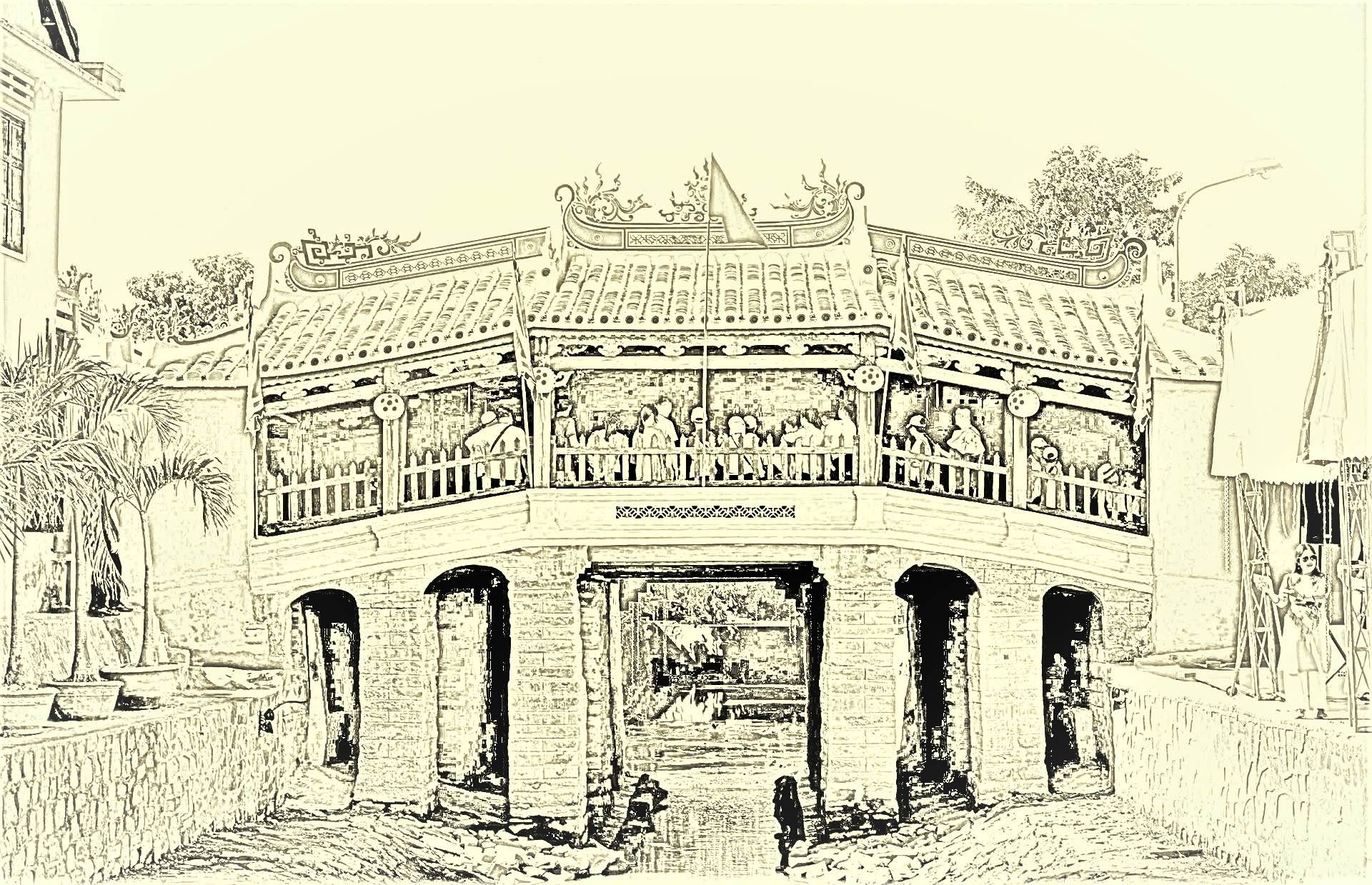
Dear Readers,
The Hanoi Times' "Words on the Street" this week offers you a take on the country's efforts to restore its cultural heritage. With a rich and diverse culture, Vietnam boasts numerous heritage sites that have stood the test of time. But time and natural forces have taken their toll, leaving these tangible legacies in a precarious state.
Hoi An’s Chua Cau restoration
Recent headlines such as "Hoi An's Chua Cau attracts tourists post-renovation" and "Visitors to Hoi An: Chua Cau looks better in reality than in photos" have emerged following the completion of the Chua Cau (Japanese Bridge) restoration project in Hoi An (Quang Nam Province) last weekend.
Seeing the throngs of tourists visiting Chua Cau after its renovation, the authorities and people of Hoi An must be proud that this heritage site retains its charm in its new guise.
With a total investment of over VND20 billion (US$800,000), this project is of great value and significance to Hoi An. In particular, the restoration of Chua Cau also highlights the close relationship between Vietnam and Japan, as the bridge was originally built by Japanese merchants in the 17th century.
The project has given Chua Cau a new appearance, distinctly different from its centuries-old visage. Extensive and thorough maintenance has removed the wear and tear accumulated over time, as well as its age-old appearance.
That's why the restoration of Chua Cau has been so controversial among the Vietnamese public, accustomed to the ancient, mossy charm of the monument. Perhaps 95% of comments on social media criticized Hoi An for undertaking the project.
Among these comments, many argued that the $800,000 spent to repair the old bridge was an exorbitant amount. They are sceptical that the local authorities have gained much from the project, suggesting that the restoration of the bridge should only cost "a few hundred million", with the rest being "embezzled".
Almost all the posts about this project received negative reactions: anger and sadness. Only a few were sympathetic and supportive.
A friend of mine who works in the tourism sector also expressed his disapproval of the project, suggesting that the restoration reflected a lack of vision on the part of local leaders.
"Agreed, it must be restored to its original state, and surely the officials in charge have studied it thoroughly before proceeding. However, the emotions, love, perception, and intuition of the visitors should also be respected. Why can't both be satisfied? Seeing it brand new like this just feels wrong," he wrote on his page.
Well, that's his personal opinion. But I think if we don't have the expertise, we shouldn't be too negative about something. Let's not be too quick to criticize those directly involved in the work.
Restoring a complex structure like Chua Cau took 19 months of research, consultation and execution by Hoi An's experts and authorities. It took a lot of effort, intelligence and time to preserve the bridge for future generations.
From Hoi An to Hanoi
The case of Chua Cau brought to mind the restoration of St Joseph's Cathedral, the Hanoi Opera House, or the old French villa at 49 Tran Hung Dao, Hanoi. There was a time when public opinion was stirred by what was called the "modernization" of these heritage sites for their post-restoration appearance.
I recall the media coverage of the restoration of the old French villa at 49 Tran Hung Dao. The final outcome of the project created a public frenzy. Many people were disappointed because the new layers of paint did not match their idea of the building's antiquity.
What they didn't know was that the new color was the original color of the villa built by the French in the early 20th century.
The same fate befell the restoration of the facade of St. Joseph's Cathedral (Hoan Kiem District). As the first coat of whitewash was being applied, someone took a photo, posted it on Facebook and made sarcastic comments about the project. Their post was shared and received hundreds, if not thousands, of comments, most of which deemed the project a failure.
Little did they know that this was only the first coat. After that, four to five more coats of lime and faux-aging paint were applied to ensure the cathedral retained its ancient appearance.
Hanoi is a historically and culturally rich city that has experienced many ups and downs. Fortunately, historical structures can still be preserved and maintained, allowing future generations to learn about and understand the lifetime of our forebears.
However, given the way public opinion is expressed, I am concerned about future restoration and preservation projects for historical monuments.
I can't imagine how public opinion will react if Hanoi decides to restore all 19 spans of the Long Bien Bridge or undertake similar programs to preserve heritage sites in the area.
Perhaps we should understand that it's not the exterior that makes a structure historically significant. It is the stories and intrinsic value that matter most.
The Hanoi Opera House, St. Joseph's Cathedral, Long Bien Bridge, Chua Cau and other monuments embody Vietnam's history. The importance of restoration is not only to give the monument a new look, but also to help future generations appreciate the values that history brings.
We must appreciate the determination of the authorities and local residents in their efforts to restore monuments and stop being skeptical. I believe this is necessary to preserve these structures over time and to encourage the nation's heritage preservation quest.






- Untold tale of Hang Dau Water Tower
- Hanoi's lively Mid-Autumn Festival a century ago
- Kinh Thien Palace restoration: Reviving national history
- Explore historical relics on Ngoc Khanh Lake's new pedestrian path
- We're too censorious about heritage preservation efforts
- Hanoi's parks and flower gardens – little known stories

